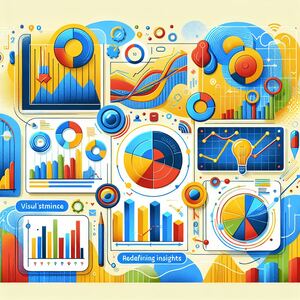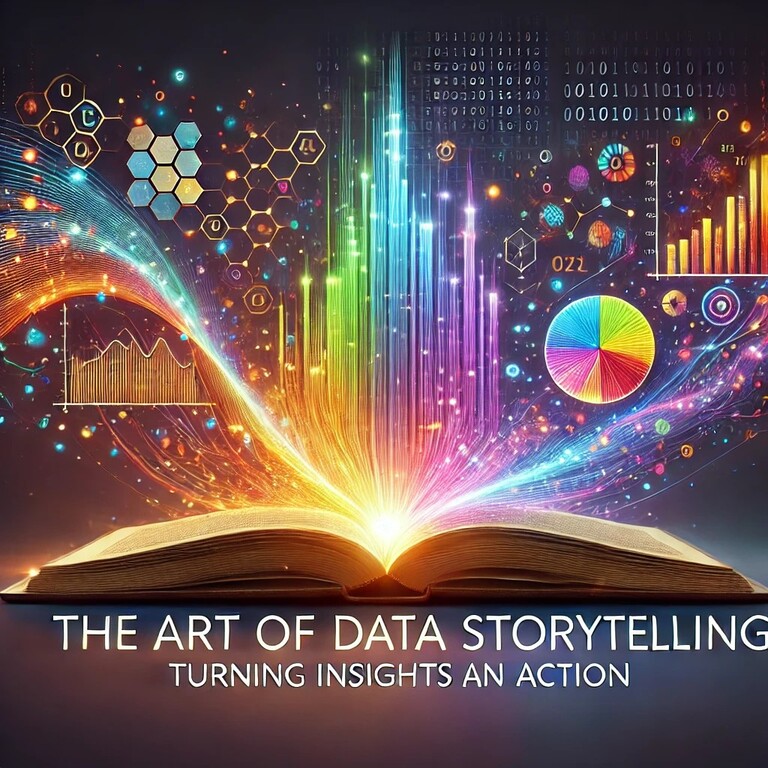In today’s fast-paced digital world, data is the cornerstone of innovation and strategic decision-making. As we look ahead to 2025, advancements in analytics are set to transform industries, driven by breakthroughs in artificial intelligence (AI), machine learning (ML), and big data tools. Businesses across sectors are gearing up for a future where generative AI, real-time analytics, and predictive modelling redefine decision-making processes. Let’s delve into these emerging trends and their impact on industries such as retail, healthcare, and finance.
Generative AI: A New Frontier in Data Analysis
Generative AI, commonly known for creating content, is transforming data analysis by automating complex processes and generating actionable insights. With tools powered by advanced models like OpenAI’s GPT, businesses can:
- Extract and interpret insights from unstructured datasets.
- Automate report generation and data storytelling.
- Simplify decision-making with conversational AI interfaces for querying data.
Use Case: Retail Data Trends 2025
Retailers are using generative AI to enhance customer experiences and streamline operations. For instance, by analysing customer reviews and social media mentions, AI can predict emerging trends and suggest inventory changes. Tesco could identify top-selling products for the holiday season, ensuring optimal stock levels and personalised marketing campaigns.
Real-Time Analytics: The Need for Speed
In a world where timing is everything, real-time analytics has become a game-changer. Unlike traditional batch processing, it delivers instant insights, enabling businesses to act immediately.
Why Real-Time Analytics Matters
- Operational Agility: Monitor processes such as supply chain logistics or manufacturing with real-time updates.
- Enhanced Customer Experience: Offer dynamic, personalised recommendations during live interactions.
- Proactive Risk Management: Detect and address security breaches or system failures as they occur.
Use Case: Healthcare Data Trends 2025
In healthcare, real-time analytics is revolutionising patient care. By integrating wearable devices and IoT technology, hospitals can continuously monitor patient vitals. For example, the NHS could leverage real-time analytics to triage patients more effectively, reducing emergency room wait times and improving care outcomes.
Predictive Modelling: Anticipating the Future
Predictive modelling uses historical data combined with machine learning algorithms to forecast future trends, making it a cornerstone of modern analytics strategies.
Advances in Predictive Analytics
- Self-Improving Algorithms: Machine learning models that evolve with data.
- Cloud-Enabled Tools: Making predictive analytics accessible for businesses of all sizes.
- Data Visualisation Dashboards: Simplifying complex insights for stakeholders.
Use Case: Finance Data Trends 2025
In finance, predictive modelling is vital for risk management and customer personalisation. Banks can anticipate loan defaults and fraud risks while tailoring financial products. For instance, Barclays could develop bespoke credit offers for clients by analysing their spending patterns and future financial goals.
The Power of Big Data Tools in 2025
The rapid evolution of big data tools is shaping how businesses manage and analyse vast amounts of information. By 2025, expect to see:
- Smarter Data Lakes: Seamlessly integrating structured and unstructured data for comprehensive insights.
- Edge Computing: Enabling faster data processing by analysing it closer to its source.
- Interoperability: Streamlining collaboration across analytics platforms.
Overcoming Challenges
As these tools evolve, businesses must tackle challenges like data silos, ethical AI implementation, and cybersecurity. Organisations prioritising robust data governance and transparency will gain a competitive edge.
Industry Impacts: Adapting to Analytics Innovations
The evolution of analytics is not just technological—it’s strategic. Businesses must prepare to harness these tools by:
- Upskilling Workforces: Building AI and data literacy among employees.
- Investing in Scalable Infrastructure: Adopting cloud-native, agile solutions.
- Focusing on Ethics: Implementing fair and accountable AI practices.
Preparing for the Future
Retailers will enhance personalisation, healthcare providers will improve patient outcomes, and financial institutions will redefine risk management—all by leveraging cutting-edge analytics. The future of data is actionable, real-time, and predictive. Organisations that embrace these trends will thrive in 2025 and beyond.
For more information, explore Gartner’s insights on AI in analytics or read Forbes’ take on real-time analytics. Stay ahead by preparing for a data-driven tomorrow.











